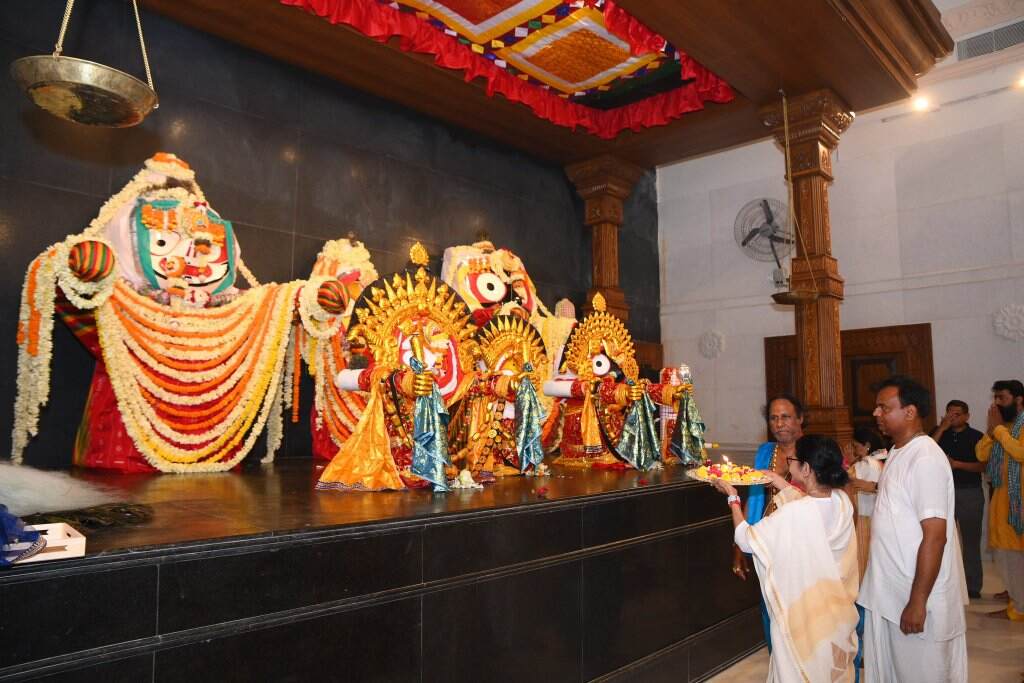A rising controversy over the naming of the newly inaugurated Jagannath temple in Digha has sparked a sharp political and cultural dispute between Odisha and West Bengal, with tensions escalating across state lines and religious sensitivities taking center stage.
Odisha Chief Minister Mohan Charan Majhi urged West Bengal Chief Minister Mamata Banerjee to drop the term “Jagannath Dham” from the Digha temple’s title. In a formal letter, Majhi emphasised that the title “Jagannath Dham” is uniquely and sacredly associated with the Puri Jagannath Temple — a centuries-old spiritual and cultural icon revered across Odisha.
“Using the same term for the Digha temple risks confusing devotees and deeply offending the religious sentiments of Odias,” Majhi wrote, calling for the immediate removal of “Dham” from the Digha site’s official nomenclature.
The controversy further intensified when Suvendu Adhikari, Leader of the Opposition (BJP) in West Bengal, shared a photo on social media claiming that a blue structure bearing the words “Jagannath Dham” had been dismantled near the Digha temple. The post triggered widespread backlash and fueled allegations that the state government was quietly rolling back the term amid public criticism.
In response, Trinamool Congress MLA Akhil Giri downplayed the incident, asserting that the controversial structure was temporary and had been set up only for the temple’s inauguration. Giri termed the outrage “politically manufactured.”
ISKCON Kolkata Vice President Radharam Das, who oversees the Digha temple, also reiterated that the term “Dham” remains prominently inscribed across the temple complex, including the sanctum sanctorum, and that no permanent installations were removed.
The East Midnapore district police issued a strong rebuttal to the viral photo, declaring it “fake news.” In an official statement, the police asserted that no dismantling had occurred and warned against attempts to incite public unrest through misinformation. “A formal case has been registered at Digha Police Station,” the statement said, with legal action underway against those spreading misleading content online.
Idol wood controversy adds fuel to the fire
The situation was further complicated by allegations that the neem wood used for the Digha temple’s idol was illegally sourced from the sacred daru (neem wood) used at the Puri temple during its 2015 Navakalevara ritual.
Initially, Rajesh Dayitapati, a senior functionary of the Puri Jagannath temple and a guest at the Digha temple inauguration, claimed that the idol was carved from leftover sacred wood from Puri. This statement sparked widespread anger across Odisha, as the daru is considered deeply sacred and strictly protected.
However, upon returning to Odisha, Dayitapati retracted his statement, clarifying that the idol at Digha was crafted from a completely different neem tree, not connected to Puri’s sacred stock.
Facing mounting criticism, Mamata addressed the controversy during a public meeting in Murshidabad.
“I was told I stole wood from the Jagannath temple! What a shame! Now the same people are saying I didn’t,” she said, dismissing the accusations as politically motivated and baseless.
Religious reverence or political symbolism?
What began as a celebratory temple inauguration has now snowballed into a complex interstate controversy blending religious reverence, cultural pride and political strategy. While Odisha defends the singular sanctity of its Puri shrine, West Bengal maintains it acted in good faith while honouring the Lord Jagannath tradition in Digha.
As both state governments hold their ground, the larger question looms: Can two temples dedicated to the same deity co-exist peacefully under different identities — or does the sacred require singularity?


